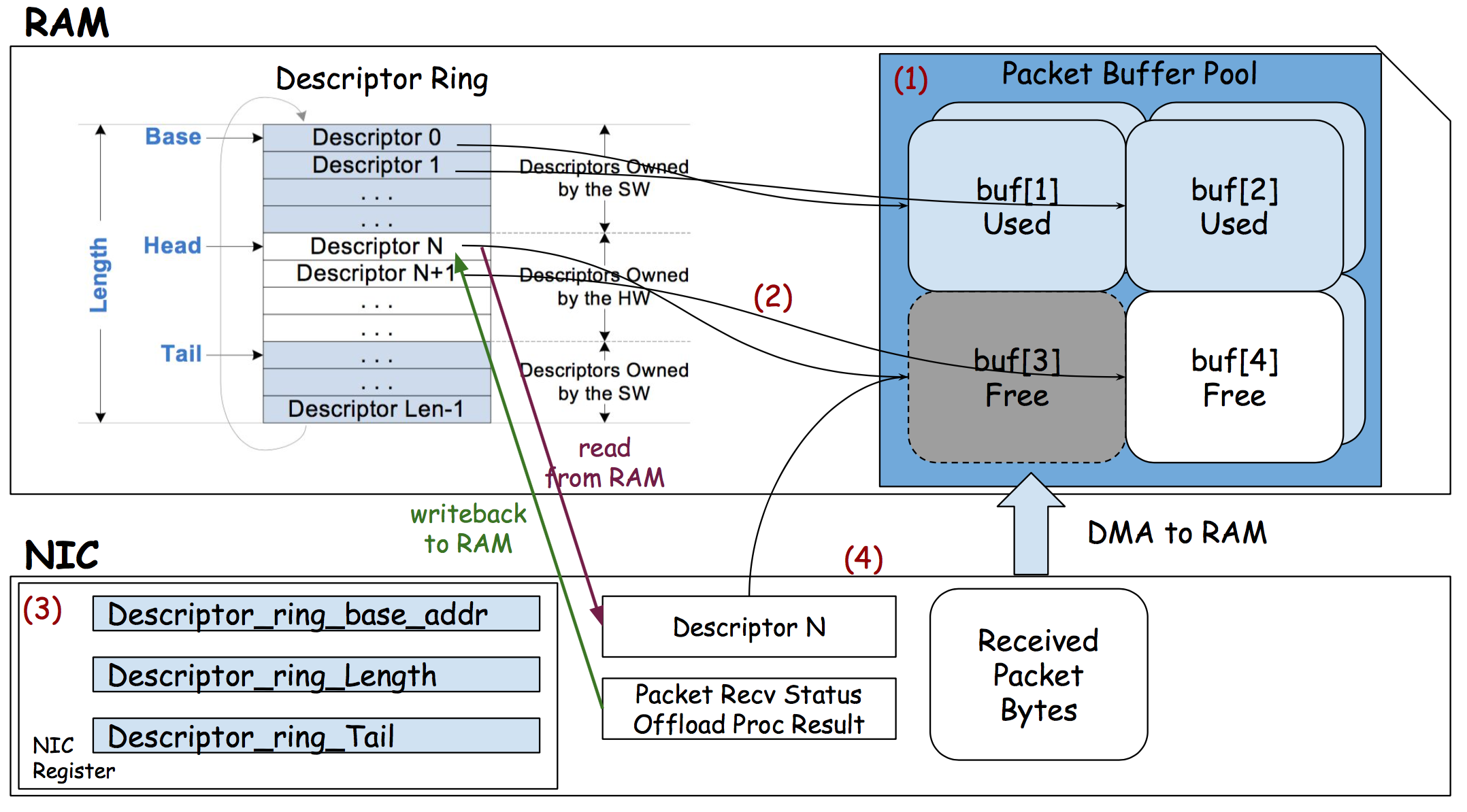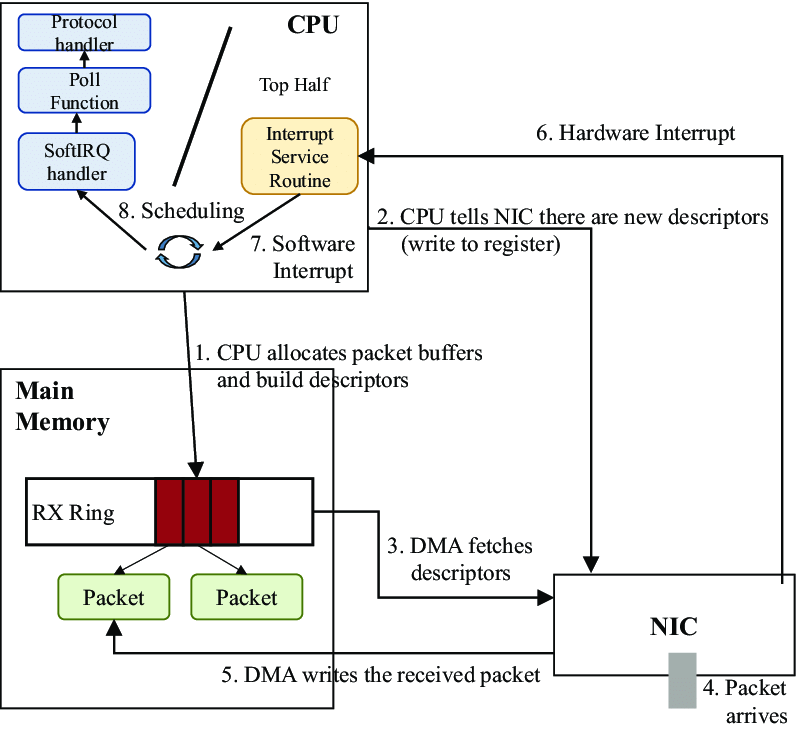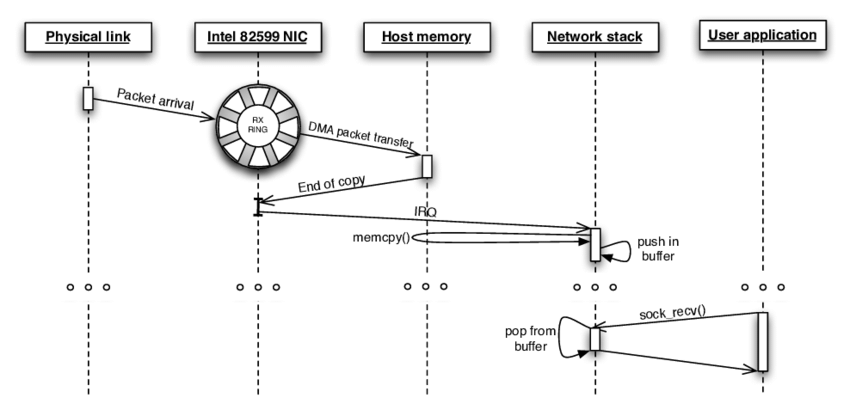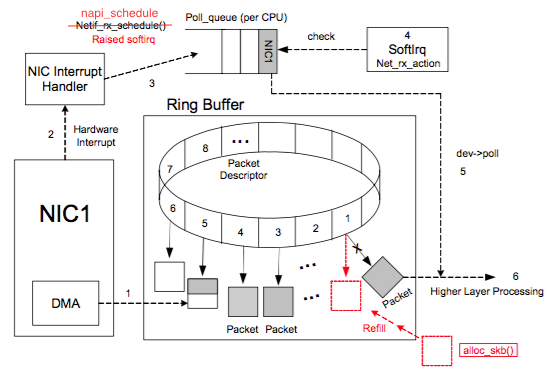Short Answer: These are the same.
More details:
First, see this post which is very related to your question.
In this article it says:
A variant of the asynchronous approach is often seen with network
cards. These cards often expect to see a circular buffer (often called
a DMA ring buffer) established in memory shared with the processor;
each incoming packet is placed in the next available buffer in the
ring, and an interrupt is signaled. The driver then passes the network
packets to the rest of the kernel, and places a new DMA buffer in the
ring.
The DMA ring allows the NIC to directly access the memory used by the software. The software (NIC's driver in the kernel case) is allocating memory for the rings and then mapping it as DMA memory, so the NIC would know it may access it. TX packets will be created in this memory by the software and will be read and transmitted by the NIC (usually after the software signals the NIC it should start transmitting). RX packets will be written to this memory by the NIC and will be read and processed by the software (usually after an interrupt is issued to signal there's work).
Hope this helps.




